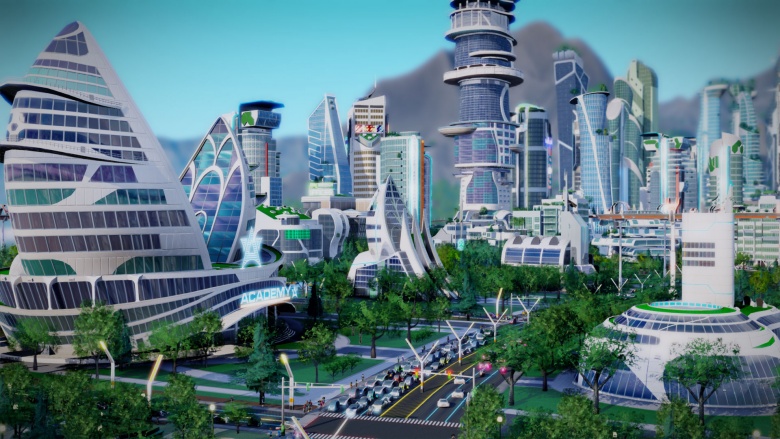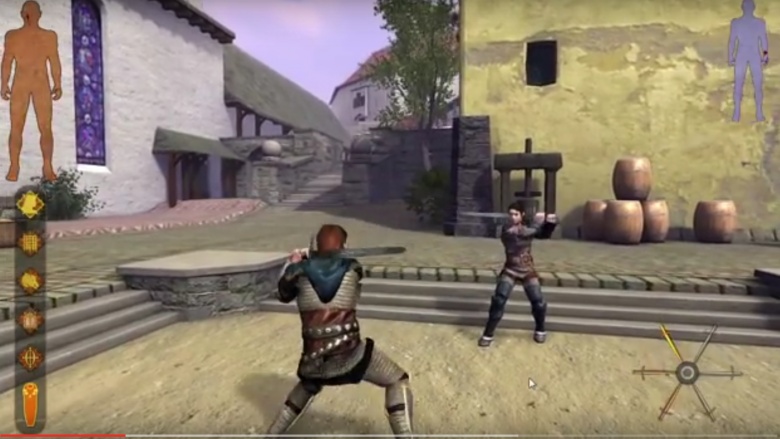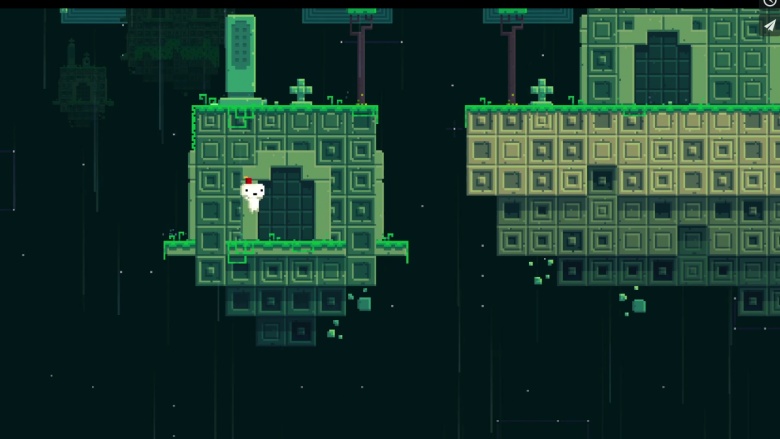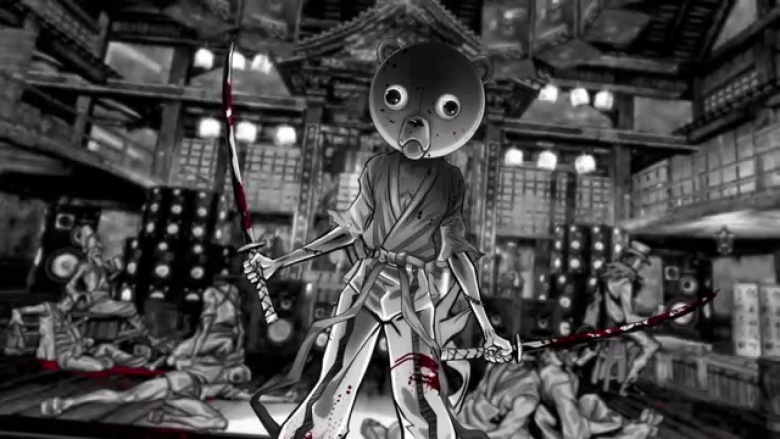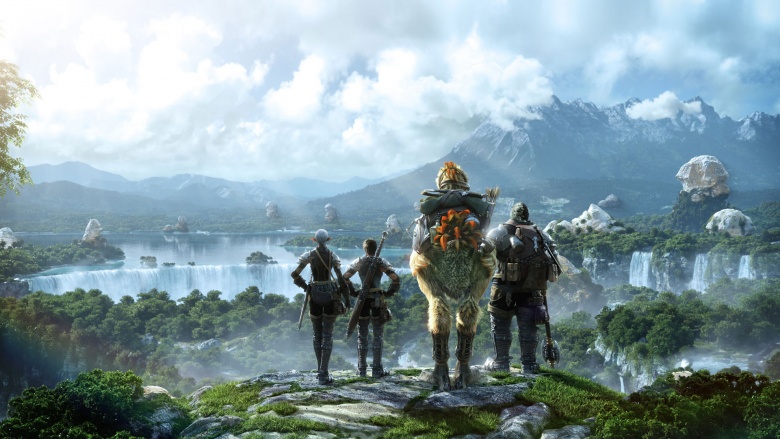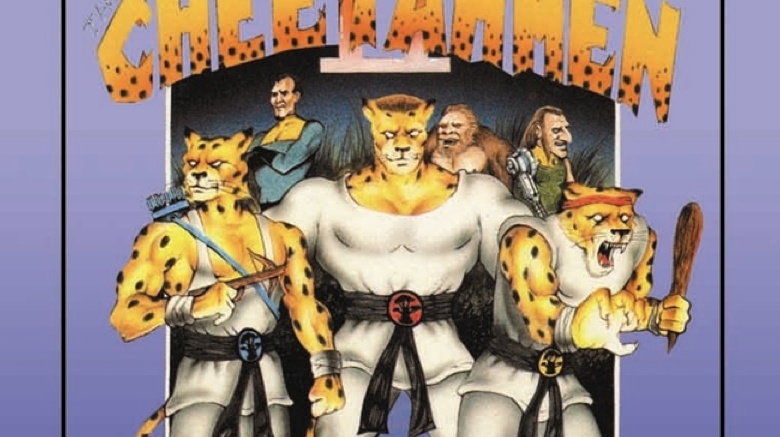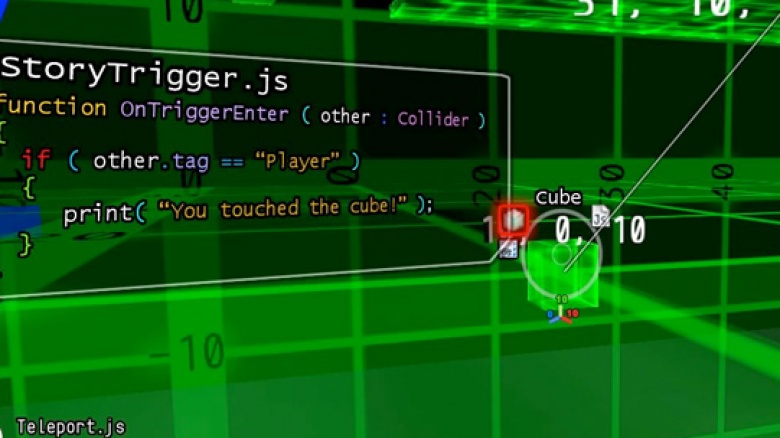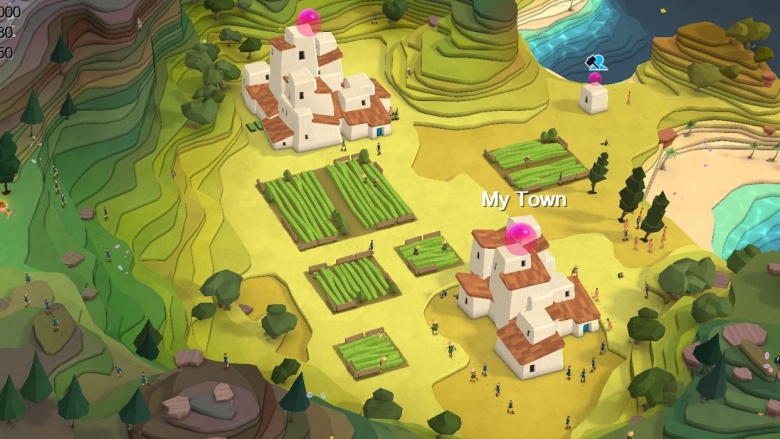Failed Video Games The Industry Wants You To Forget
For every amazing success like Fallout 4, there's at least one video game project that turns out so poorly that it damages the industry as a whole. Video game failures can manifest in many ways, from projects that make huge promises and fail to deliver, to highly-promoted titles that are just never released. Abject failure transcends simply sucking and ventures beyond, ruining reputations and lives, resulting in a massive loss of revenue and dignity, and, if you're lucky, the highly public end of a career. Here are a few video game projects that failed so massively that the whole industry wants to Men in Black them out of your memory.
SimCity 2013
EA's 2013 reboot of the long-running SimCity franchise was so severely botched that EA itself admitted that the launch was "dumb," and offered a free game to anyone who purchased SimCity by way of apology, which is like a restaurant giving you a free meal to apologize for poisoning you. Players complained about the absence of the basic ability to build cities without an Internet connection, poorly-connected servers, and unrealistically small city sizes. A week after launch, Amazon stopped selling the game and EA cancelled marketing plans, resulting in a huge loss of revenue. It took EA almost a year to add an offline mode, but it was already too late to make a difference; EA had become video games' worst villain.
Clang
A "revolutionary" motion-controlled swordfighting game project called Clang received over half a million dollars in funding from eager gamers, but the project never made it past the prototype phase. Clang is an awesome idea on paper, but the game's creator, science fiction author Neal Stephenson, admitted that the prototype just wasn't any fun and cancelled the whole project unceremoniously, with all of the game's invested cash already spent on a game that just never came to be. There's never been a more appropriate virtual seppuku than Stephenson's, and now gamers are even more hesitant to put money into crowdfunded gaming projects.
Fez 2
Phil "Fish" Poisson, founder of Polytron and one of the subjects of 2012's Indie Game documentary, had planned a sequel to his popular puzzle platformer game Fez, but the project disintegrated once Fish took to Twitter and had a very public meltdown. Fish became embroiled in an online controversy concerning alleged collusion between developers and press, and/or feminism, depending on who you ask, and launched into a hateful tirade against all gamers, stating that he was just going to take the money invested in Fez 2 and run. Fish was true to his promise and hasn't been active in game development since 2013, only amplifying the scrutiny placed on smaller developers.
Afro Samurai 2: Revenge of Kuma
The first game in the Afro Samurai series scored a generous B- across the board, so the reasons for a sequel getting a greenlight are still a mystery. But Afro Samurai 2 was so bad that developer Versus Evil pulled the game from stores, removed all download options from consoles, and offered refunds to anyone unfortunate enough to suffer through any of it. The game was only one part of a trilogy of Afro Samurai 2 games, but all subsequent releases were canceled, making this one of the more colossal failures in video game releases.
Final Fantasy XIV
In development from 2005 until 2010, Final Fantasy XIV was slated for release on multiple consoles, but development problems and disagreements reduced the game to PC-only status, alienating many gamers. Those who could actually play it criticized everything from the interface to the actual gameplay, and before long, the game's developer and producer were removed from their positions while a new team was put in place to save the game ... but only after the company's annual income was reduced by almost 90 percent because of the huge failure. A complete reboot, A Realm Reborn, was released to critical acclaim in 2013, but it was only one step towards rebuilding the tarnished brand.
Cheetahmen II
There are things in this world so shamefully off-key or just plain bad that they develop a cult following for all the wrong reasons, and Cheetahmen II is one of those strange things. First appearing on an unofficial, poorly-programmed NES cart called Action 52, The Cheetahmen aren't much more than cheap Ninja Turtles ripoffs. But their brief game somehow warranted the development of an unfinished sequel. Cheetahmen II was never supposed to be released, but a small horde of cartridges were found in a warehouse and sold in 1996. The game was unplayable due to bugs, but a Kickstarter project in 2012 funded by retro-nerds republished the game, now playable, but still full of spelling errors. Good job, internet.
Code Hero
Yet another Kickstarter flop, Code Hero promised to introduce gamers to the world of coding using an interactive environment and nontraditional methods. But the project's creators never managed to use the $170,000 in funding that they received to complete their own code. Delivery of the game was promised in 2012, but the game's lead organizer abandoned ship in 2014, leaving a complete void of leadership, except for an active private beta mode still being used. Code Hero sought to make the world a better place by helping players develop skills for the future, but the program still can't seem to get itself off the ground.
Daikatana
At a glance, Daikatana seems like a game you'd be psyched to play. It was billed as the FPS to revolutionize the genre, adding a story about time travel to the usual shoot-em-up. But it was a colossal failure, one that one-time industry giant John Romero would probably like you to overlook.
Even if you don't know the name, you know his work. He was one of the driving forces behind Quake, Wolfenstein 3D, and Doom, so it's understandable there were high hopes for Daikatana. According to Giant Bomb, things started looking bad pretty early on. Romero finished concept work on the game in 1997, but an insane amount of in-house conflict — with Romero's ego perched high atop the mountain of hate — meant a release didn't happen until 2000. By then, technological advancements made Daikatana look painfully stuck in the '90s, and developer Ion Storm didn't help matters with its first advertisement. The first many gamers heard of Romero's wanna-be game changer was a red poster that stated, "John Romero's about to make you his b*tch" and that they should "Suck it down." (Romero later apologized for the ad.) Throw in a complete lack of save points, a reliance on AI sidekicks dumber than drunk hamsters, and levels seemingly designed just to be annoying, and what do you get? A career-destroying fiasco.
Fury
Fans of MMOs might remember Fury, Auran's 2007 foray into online gaming. Auran wishes you'd look the other way on this one because after only 10 months it was shut down in a blaze of whatever the opposite of glory is.
It was a major enterprise, and The Age says Auran pumped around $15 million into a development process that lasted about two years and employed more than 60 people. They all lost their jobs when Auran folded under the pressure of the ailing game, which GameSpot says was blamed on the company's inability to "find a viable business model." In months, Fury went from subscription-based to free-to-play to nonexistent.
GameSpot later talked to Auran CEO Tony Hiliam about what went wrong, and he blamed a bit of it on anyone's inability to compete with World of Warcraft, along with what's probably a little more important: a complete misunderstanding of player psyche. Fury was supposed to be a 100 percent PvP game, and as a gamer, you can see the problem immediately. There's always the poor schmuck getting sand kicked in his face in PvP, and with nothing else in the game to do, it's no wonder people rage-quit and moved on to something else. (WoW. They moved on to WoW.)
E.T. the Extra-Terrestrial
E.T. was an amazing movie, Atari was a revolutionary game system, and Spielberg himself had some say in the game that was going to be based on his film. Sounds promising, right? The game's complete failure is so legendary it only ended in 2014, with Ars Technica's report on a modern-day archaeological excavation that confirmed the truth behind a decades-old urban legend. Truckloads of E.T. cartridges (and some other games) were dumped and buried in the New Mexico desert in a mass grave dug in 1984. Only two years before Atari was enjoying some massive popularity that ended with E.T., the game Atari fans couldn't forget or forgive.
In 2014, Engadget talked to creator Howard Scott Warshaw and asked what happened. It turns out, you really can't blame the guy. The project was condemned to failure from the beginning, mostly because he had two days to create a concept and five weeks to actually develop the game. (For perspective, Warshaw had just come off the Raiders of the Lost Ark project, which had a deadline of nine months.) He also had two people helping him: someone to write the music and a graphic designer. Atari's slow crumble started not long after the game hit shelves, and while there's still some disagreement on the exact details, we all know the ending now.
EverQuest Next and Landmark
Before WoW, there was EverQuest. It was huge, putting the MM in MMORPG and introducing gamers to a scale they'd never experienced before. Then, more and more games started going the MMO route, and EverQuest's star faded a bit.
In 2013, Sony dropped an EverQuest Next trailer, and it looked incredible. Going along with it was partner game Landmark, which would give crafters their own open world and allow players to make entirely new structures. They did, and it was glorious — for a bit, until overhaul after overhaul so completely sucked the life out of Landmark that EQ2 Wire reported that peak online player numbers could never really crack 150 players as 2016 drew to a close. There was also some major behind-the-scenes chaos, the move to Daybreak Games, and unsettling rumors about just how heavily EQNext was going to rely on content designed and built by Landmark players. Then factor in just how much technology you'd need to have sitting on your desk in order to play.
PC Gamer reported on EverQuest Next's untimely demise in 2016, when Daybreak announced they'd discovered this new EQ "wasn't fun." They claimed Landmark was going to continue — then announced the end of that in 2017. At the same time, they're promising to keep growing EQ and EQ2, so they'd like everyone to keep playing. Please keep playing.
Tony Hawk
Activision won't stop trying to make a Tony Hawk game that's a success, but it probably should. Tony Hawk: Ride failed miserably in 2009, and IGN says it was in large part due to the innovative idea of using a custom, skateboard-shaped peripheral that players controlled by riding like a real skateboard. It sounds like a great idea, but mismanaged difficulty settings and the horrible controls the skateboard actually had meant no one was happy about paying the steep price it was saddled with. Tony Hawk: Shred failed just as hard a year later (perhaps unsurprisingly), with Kotaku saying it was such a flop that most of the development studio's staff was laid off.
Tony Hawk's Pro Skater 5 hit in 2015, and was it a success? Given that Kotaku said the first launch day video released was a montage of glitches, you'll probably guess the answer is a resounding, "Nope." There were so many glitches, in fact, that it took a 7 GB patch to even attempt to fix a 4.5 GB game. If there's anything that doesn't inspire sales, it's knowing you're going to have to cross your fingers and hope they manage to fix it at some point after you buy it. It's no wonder this was another trainwreck.
Battlecruiser 3000 AD
When Polygon interviewed game guru Derek Smart in 2012, they called him something of an enigma because despite being in the industry since 1992, he's failed to make a great game. Or even a good one. Sometimes, he made the exact opposite, like he did with Battlecruiser 3000 AD.
When it came out in 1996, reviewers wrote about constant crashing, controls that made no sense (or just didn't work), and a promised ground combat mode that no one knew where to find. Even the instructions got some hate, with Gamespot saying, "If I fed my dog a set of Scrabble tiles he could have crapped out a better manual." Ouch. They also described it as a "universe simulator," so there wasn't really a point to it at all ... until they added different campaign and play modes, which didn't technically work.
It was so bad a Stanford case study says early internet trolls created their own Usenet game: Battlecruiser: The Online Game. It was basically a group of gamers who baited Smart into defending his game — which he did, maniacally so — and seeing who could make him go the most mental with rage-hate. Smart has since made more than a dozen other (still bad) games, in hopes he'll get it right one of these days.
Silent Hills
Sometimes, the gaming industry wants us to forget about a project not because it was bad but because it was so filled with potential we can't help but hate them for not making it happen. That's the case with Silent Hills, another installment of the Silent Hill franchise. Those were creepy, sure, but this one had Guillermo Del Toro on board, along with Hideo Kojima. Oh, and it was set to star Norman Reedus.
Right? It was canceled in 2015, and Konami was carefully unclear about just what had happened. IGN said Del Toro continued to hold out hope even after the cancellation announcement, but "undisclosed issues" made it seem likely Konami hadn't just ended the game, but had taken the ball home, locked the doors, and not invited anyone in for lemonade. The whole thing shook out really strangely, and Kojima was still not being allowed to talk about it in a 2016 interview with Polygon. He did say he was focusing on his new studio, but that epic horror collaboration was no longer in the works. Please, a moment of silence.
Star Wars 1313
Disney's acquisition of the Star Wars franchise was something of a mixed bag of good and bad news. Among the bad news was the shutdown of LucasArts (via Kotaku) and the end of what was going to be their flagship project for putting the developer back on the map: Star Wars 1313. It had been in development for a while, and it would have been amazing. Think of it as an HBO-style crime drama about the seedy underbelly of Coruscant, which you navigate as none other than everyone's favorite bounty hunter, Boba Fett. It was extravagant, it was immersive, and it was down-and-dirty in a way no one's seen Star Wars be.
Then Disney came in, killed LucasArts, and killed the game. Ask any of the Star Wars fans and gamers who had been eagerly awaiting news of a release date (while drooling over some seriously incredible concept art), and it's clear that whole "forgive and forget" thing isn't going to work here. At all.
Fallout Online
Fallout 4 was huge, and beautiful, and awesome, and Bethesda has shown time and time again that it can do post-apocalyptic nuclear wasteland right. But the Fallout franchise wasn't always entirely Bethesda's, and it's probably hoping you've forgotten there was almost a Fallout MMO.
Bethesda originally bought Fallout from Interplay, and as part of the deal Interplay was going to be allowed to develop an MMO. There was a caveat, Kotaku says, fine print stating full-scale work needed to start by April 4, 2009. If it didn't, Interplay would forfeit their rights. Work didn't start, and the following legal battle wasn't over until 2012, with Bethesda's parent company, ZeniMax, winning 100 percent of Fallout's intellectual property. The fallout (yup!) was actually that no one got a Fallout MMO, and even though Player.One reported there are murmurings that something might be in the works in 2018, we've heard it all before, and we won't be letting anyone toy with our emotions again until we get it straight from the horse's mouth.
Duke Nukem: Forever
To gamers of a certain age, Duke Nukem was an icon. He was revolutionary ... at least, he was in the 1990s. Video games were still fairly young, and Duke Nukem 3D was largely unregulated, full of violence, more than a few pixelated bikinis (and pixelated not-bikinis), and lots of guns. That's pretty much it, and if you disagree, tell us what the plot was. Didn't think so.
Duke Nukem: Forever was the long-delayed follow-up, and US Gamer points to a whole host of reasons Duke became a poster child for knowing when a franchise should just stay the stuff of fond memories. While Forever languished in development hell, the rest of the gaming world was building bigger, better, more powerful engines that rendered work on Forever obsolete before it would hit the shelves. It wasn't released until 2011, 15 years after 3D. That meant Duke's teenage fan base had grown up and moved on to other things — like real women — while Duke remained the same horribly dated, cringey, uber-sexist figure who was more likely to wave a few dollar bills at a woman than try to engage her in conversation. The same character that was edgy and cool in the '90s became that creepy guy everyone hoped wasn't going to be invited to the party, and he definitely should have stayed home.
Marvel Heroes
Marvel Heroes didn't have a decent run, but at least it had a run. According to Kotaku, it started out on the PC in 2013 and was ported over to the PS4 and Xbox One in early 2017. Like a ton of free-to-play games, you didn't have to spend money to play, but you could if you wanted some special perks. People did pay, a bit, but it wasn't enough to keep the lights on. When Gazillion Entertainment announced it would flip the switch on the servers, there was some pretty immediate gamer rage. It was only partially because of the shut-off, and more because people who had dumped hundreds of dollars into the console version of the game were suddenly kissing their newly purchased pixels goodbye.
The whole thing reeked of a last-ditch effort to make some money off players before finally pulling the plug on the game, and that sort of thing doesn't go over well. Even more importantly, it's not going to inspire much in the way of trust when the next title rolls around, especially since some players may not have gotten refunds on recent purchases.
Godus
If you can say anything about Peter Molyneux, it's that he's an incredibly ambitious game designer. And if there's one problem that creators will tell you about their failed projects, it's that those projects were too ambitious. Combine the two and you get Godus, a "god" strategy game where players control a population and send it to dominate surrounding areas. The game languished in development for a while, missing deadlines and breaking promises. Even sadder, the winner of 22cans' previous game, Curiosity, was supposed to be given a paid position directing the events in Godus, but the job never materialized, leaving the winner with a fat sack of nothing, and a front row seat to watching one of gaming's great innovators fall. It did eventually hit the Google Play store with middling reviews.
APB: All Points Bulletin
At a glance, an open-world MMO with a Grand Theft Auto feel seems like it would be a win. But when APB: All Points Bulletin opened in 2010, it lasted a shocking three months. That's bad, but it gets worse: Those three months were the culmination of five years of work and a budget of more than $100 million.
VentureBeat said that Realtime Worlds failed because they didn't take one bit of basic business advice: diversify. A lot changed in the gaming world over the course of those five years, while APB was still stuck in the not-so-distant past. When PC Gamer talked to APB's creative director, Dave Jones, he said they'd learned some important lessons. Not only was it too PvP-focused, but it required an insane PC to run on the client end, too. In the end, the vision didn't match up with the practicality of what people wanted and what their computers could handle, and it was a very expensive lesson.
